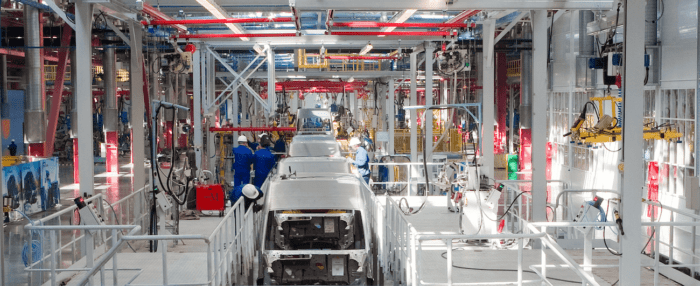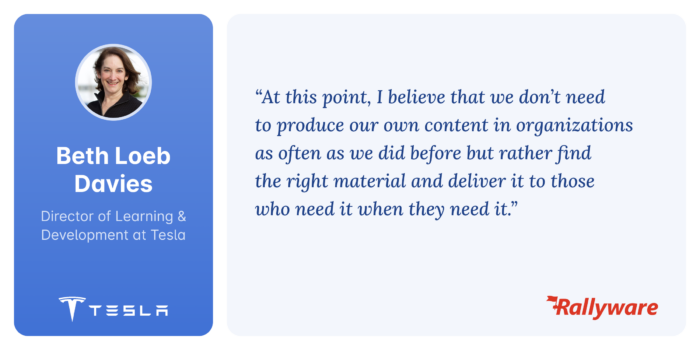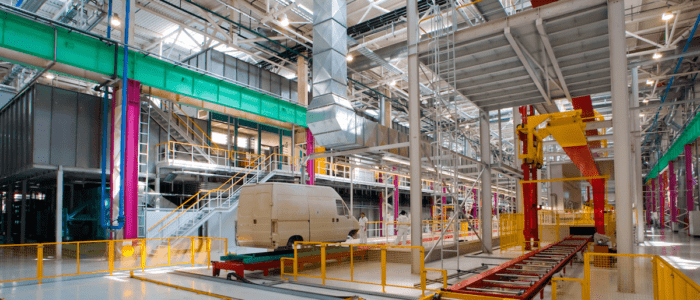L&D Leaders Weigh in on the Current State of Workforce Reskilling and Upskilling
Tesla’s Employee Training Evolution
Today, businesses in almost every industry are working hard to keep up with the rapid pace of changes in technology. Nowhere is this more evident than in the auto industry, where manufacturing technologies are advancing so quickly that finding and training highly skilled workers that companies need is a real challenge – one that human resource (HR) professionals like Beth Loeb Davies are working hard to meet. The efficiency of Tesla’s employee training is on her mind day and night.
Davies, who has been a Director of Learning & Development at Tesla, shared her insights about changing technology in the auto industry and its impact on training and development and the future of work. Read on for her insights into employee training in this ever-evolving industry, and predictions for the future of work!
A Background on Tesla
Tesla, Inc. is an American electric vehicle and clean energy company founded by Elon Musk, JB Straubel, Martin Eberhard, Marc Tarpenning, and Ian Wright in 2003. The company is named after the renowned electrical engineer and physicist Nikola Tesla. Tesla is primarily known for its production of electric vehicles (EVs), but it also manufactures energy storage products and renewable energy generation solutions.
Tesla’s mission is to accelerate the world’s transition to sustainable energy. The company has gained significant attention and popularity for its innovative electric cars, which are designed to be high-performance, energy-efficient, and feature advanced autonomous driving capabilities. Some of Tesla’s notable vehicle models include the Tesla Roadster, Model S, Model 3, Model X, Model Y, and Cybertruck.
In addition to electric vehicles, Tesla is a leader in energy storage solutions. It produces the Powerwall, a home battery pack that stores energy generated from renewable sources like solar panels. Tesla’s Powerpack and Megapack are larger-scale energy storage systems aimed at businesses and utility companies.
Moreover, Tesla has made significant advancements in autonomous driving technology. Its vehicles are equipped with Autopilot, an advanced driver-assistance system that enables features such as lane centering, adaptive cruise control, and self-parking. Tesla is actively working on developing fully autonomous self-driving capabilities.
The company has garnered attention not only for its innovative products but also for its disruptive approach to the automotive industry. Tesla has revolutionized the perception and adoption of electric vehicles, inspiring other automakers to invest more in electric mobility and sustainability.
When it comes to employee training, technology is changing the way we work and learn

“There’s a big shift happening right now in learning and development,” Davies said. She explained that the development of training programs is increasingly informed by neuroscience – real data from new research – rather than subjective opinions about what does and doesn’t work. “These days, there’s a lot of science coming out to support new and different kinds of learning and development initiatives.”
Davies has long been interested in behavioral science. “Now, I’m expanding my thinking by exploring neuroscience and its application in learning and development,” she said. She stays up-to-date by reading books that offer insights she can apply in her role as an HR professional. Books like Your Brain at Work help her learn more about how the human brain is able to sort the huge amount of information we encounter every day to make sense of it all – to organize, prioritize and act on it. Her reading list also includes titles such as Blind Spot, which explores the hidden biases in our minds. Another book, Quiet Leadership, is all about improving employees’ performance by changing the way they think.
In companies such as Tesla with rapidly changing environments, HR managers have to adapt to those changes very fast and incorporate them into their employee training programs. Davies noted that some training managers still place a strong emphasis on group learning in classroom settings. She thinks that in the future, this trend will go away as their knowledge about how technology can improve learning grows. Davies also said that measuring results is critical, but this too needs to change.
“For many years we’ve been focused on measuring the return on investment (ROI) for the classes we ran,” she noted. “As we expand our offerings beyond classes, we need to shift from measuring learning events to longer-term learning outcomes. We need to measure whether people are actually performing better and getting the results we want.”
Technology and brain science go hand-in-hand
Davies believes that brain science and technology go hand-in-hand, and both are changing the future of work. For example, mobile technology offers the opportunity for personalized learning on demand, also known as “just-in-time” learning.

In contrast to traditional learning environments, mobile learning – which typically employs some combination of graphic elements, audio, video, along with text – is largely based on how the brain acquires information through the different senses and how that information is processed into memory.
With mobile learning, companies can now deliver the specific kinds of training their employees need at the exact time they need it, helping them more quickly respond to rapidly changing technologies. This is particularly important in the auto industry where the complexity of the manufacturing processes and the different technologies employed can create several different learning groups among the workers within a single factory.
Mobile learning is ideally suited to deliver microlearning, which also builds on research showing that our brains absorb and more readily recall information when it is broken down into small, easily digestible chunks. In the auto industry and beyond, microlearning is redefining the nature of employee training. Davies noted training that used to require workers to set aside time to attend is now becoming part of their day-to-day experience. With microlearning, in the future, “the learning experience will be embedded in our work.”
Adopting technology-based training is not without risk

One of the biggest challenges for HR professionals in the auto industry is delivering training over large geographical areas. Traditional training developed for co-located teams can be very costly for companies to deliver across different countries and cities. Davies said that while computer-based training can serve a distributed workforce within the auto industry well, the shift toward these technologies can create a digital divide among employees in a corporate office or dealership and those who work on the factory floor where access to computers is more limited.
To avoid this, Davies said training should first be developed with the remote workers in mind. This kind of training can then be combined with more traditional, offline learning and development opportunities for those in a co-located work environment.
The role of HR professionals is evolving
Just as learning technologies are changing, Davies said the role of human resource professionals is rapidly shifting from developers of learning content to curators of existing content. “At this point, I believe that we don’t need to produce our own content in organizations as often as we did before but rather find the right material and deliver it to those who need it when they need it,” Davies said.
She pointed out that while workers are already learning through alternative media, much of what they find online is not relevant to their needs. The volume of information available is simply too much to sift through. In addition to curating content, HR professionals will also have to develop ways to ensure they are directing people to the right content. This will require a stronger focus on the individual worker.
“There is a lot of talk about creating learning organizations, but I don’t believe that organizations learn, I believe that people learn. The way we have to do our work is by impacting individuals.”
Davies said continuous learning is important for the HR professional, just as it is for the colleagues they serve. Those who stay up to date with the most current research and look for ways to incorporate it into their learning and development programs will be better to adapt to the rapidly changing future of work.
Davie’s future of work predictions for 2027
- People will be adapting to new models and technologies much faster. If somebody thinks they secured their place, they will fall behind. Continuous learning is what will define a successful professional in the future.
- For companies with a combined workforce of both distributed and co-located workers, a growing digital divide between those with access to computers and those without will challenge HR professionals to develop learning and development opportunities that work for both groups
- Leadership and managements skills will still matter for human resources professionals. As their roles transition from developers of training content to curators of existing content, these skills will be needed to ensure workers are inspired to access the training they need when they need it.
See how technology helps with employee training, so employees are more engaged and productive by requesting your demo of Rallyware demo today!
News and Insights on Workforce Training & Engagement
We’re among top-notch eLearning and business engagement platforms recognized for effective training and talent development, helping to empower distributed workforces
Subscribe
